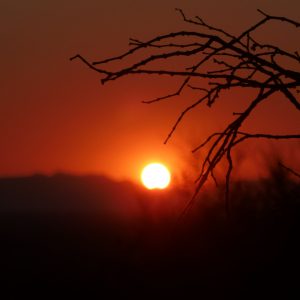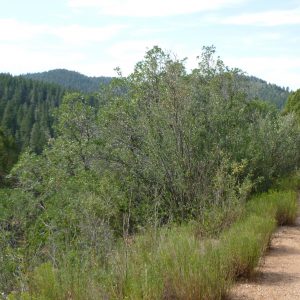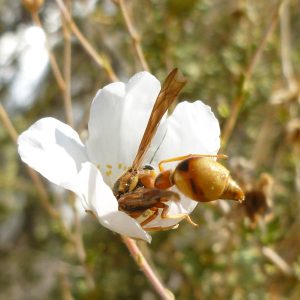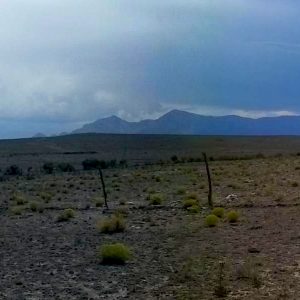In the past two months seed collection has been slow and my mentor allowed me to work with other botanists at Rancho Santa Ana Botanic Garden on other projects in the field. The first project that I participated took me to Sequoia and Kings Canyon National Parks to look for non-native and rare plants in the Jennie Lakes Wilderness Area. This consisted of 8 to 10 mile hikes and lots of surveying. We ran into groups of hikers from all over the world, from Japan to Germany. Leroy Gross, the senior curatorial assistant at Rancho Santa Ana Botanic Garden led the trip. At the summit of Shell Mountain we found pockets of the rare Dicentra navedensis, a relative of the cultivated bleeding heart and clearly related to Dutchman’s breeches (Dicentra cucullaria) if you happen to be from out east like I am. We made vouchers of all of the rare plants and associated species located in the area. No photos exist from the Shell Mountain population to our knowledge, so we snapped a couple and made our way back down the mountain.
In the high altitude meadows we visited we collected and documented several populations of Ivesia campestris. To our delight we found no non-native plants in the Jennie Lakes Wilderness. This was suprising, considering the amount of hiking and large number of horses that travel on the trails. My favorite plant was the native Phleum alpinum, a grass that has a light purple inflorescence. At first I thought it was Timothy (Phleum pratense), because of its association with horses.
-Pine drops-
The fall rains are causing the fall fruting annuals to spring to life. In some areas of the desert there has been 10 inches of rain in the past 2 months! We’ve gone from drought conditions and one of the lowest spring melt years on record to recieving 400 percent of the normal fall precipitation, all in one year. In areas above 4,000 ft., the contrast is astonishing. There we find Joshua tree savannahs, with large annual diversity, including 5 species of fruiting Bouteloua. I’m really looking forward to making seed collections, because the mid-summer was almost exclusively Bebbia juncea and Larrea tridentata collections. Insect damage was high, possibly because insects were eating outside of their preferred forage because nothing else was available. I’ve also completed my vouchers for the spring, labelling them and getting them ready for shipping.
This week I’m going out to the central Mojave in an area close to the Old Woman Mountains. This area recieved so much rain a month ago that 2 major highways were shut down because of the flash floods; we were conducting field work at the time and had to return to headquarters because of the conditions. I’ll be heading out with Dunan Bell, a botanist with an encyclopedic knowledge of desert flora. He scouts for populations of rare plants in the Mojave and Sonora deserts and I hope to make seed collections while contributing to his project.
















